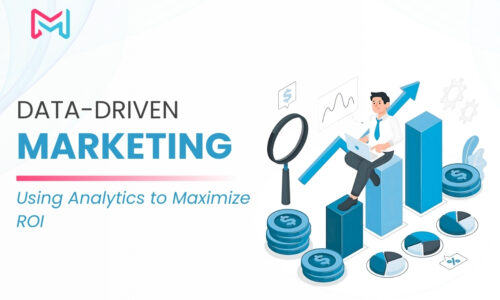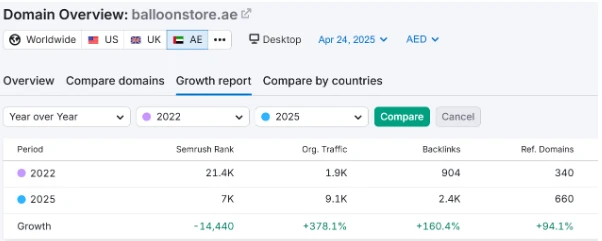
How to Speed Up Your Website and Boost Conversions in 2025
- digitalmanqoosh
- August 1, 2025
- Uncategorized
- 0 Comments
In 2025, pace is everything—mainly on the subject of your website. Whether you’re an e-trade store, a service issuer, or a corporate logo, your internet site pace immediately impacts how lengthy customers stay, how they interact, and whether or not they convert into clients. A gradual website online would not just frustrate traffic—it actively kills conversions.
So, how are you going to make certain your web page masses speedy and performs better than the opposition? allow’s dive into the best techniques to hurry up your internet site and improve conversions this year.
Why Speed Matters More Than Ever
These day’s customers anticipate lightning-fast digital stories. In line with latest statistics
- 53% of users abandon a domain that takes more than 3 seconds to load.
- A 1-2nd postpone in web page response can bring about a 7% reduction in conversions.
- Google considers page speed a ranking component for each cell and laptop seek.
In other words, sluggish = lost commercial enterprise.
1. Use a Modern Hosting Solution
Your hosting company is the inspiration of your internet site’s overall performance. In 2025, cloud-primarily based, controlled web hosting is the norm for businesses that care about speed and security.
What to Do:
- Choose a reliable host with worldwide CDN integration.
- Opt for LiteSpeed or NGINX servers over conventional Apache.
- Make sure they provide automated scaling to deal with site visitors spikes.
2. Optimize Images Without Losing Quality
Images are frequently the heaviest factors on any website. However blurry or sluggish-loading images kill consumer enjoyment.
What to Do:
- Use subsequent-gen formats like WebP or AVIF.
- Compress pix with equipment like TinyPNG or ShortPixel.
- Implement lazy loading to delay off-screen images from loading until needed.
3. Implement a Content Delivery Network (CDN)
A CDN distributes your website’s content across servers global, so users load your site from the nearest region—dramatically speeding up overall performance
Benefits:
- Reduced latency
- Quicker loading times across regions
- Progressed search engine optimization and UX
4. Minify CSS, JavaScript, and HTML
Every piece of unnecessary code slows your site down. Minifying your files removes unnecessary characters like spaces and comments.
What to Do:
- Use tools like UglifyJS or CSSNano.
- Combine files where possible to reduce HTTP requests.
- Use asynchronous loading for JavaScript to prevent it from blocking rendering.
5. Embrace Core Web Vitals Optimization
Google’s core internet Vitals have become a first-rate ranking thing. These metrics degree the user experience of your website.
Focus on:
- Biggest Contentful Paint (LCP): Measures loading performance
- First input postpone (FID): Measures interactivity
- Cumulative layout Shift (CLS): Measures visual balance
Equipment like Google PageSpeed Insights or Lighthouse deliver specific recommendations on a way to improve.
6. Reduce Redirects and Eliminate Broken Links
Each redirect provides a further HTTP request, slowing down the website. Broken links don’t simply hurt UX—they harm seo too.
What to Do:
- Use a redirect mapping plan.
- Keep away from chain redirects.
- Frequently test your web site for 404 mistakes in the use of gear like Screaming Frog or Ahrefs.
7. Use Caching Strategically
Caching stores a version of your internet site for faster transport. While configured properly, caching can reduce load instances extensively.
Sorts of Caching:
- Browser caching (store static files domestically)
- Server-facet caching (shop dynamic content material at the server)
- Plugin-based totally caching (for WordPress, use WP Rocket, W3 general Cache, and so forth.)
8. Mobile-First, Always
With over 60% of traffic now coming from mobile gadgets, your website needs to perform perfectly on smartphones.
What to Do:
- Use responsive layout that adapts to all screen sizes.
- Keep away from large elements or popups that hinder cellular UX.
- Test your website online using Google’s cell-friendly test.
9. Monitor, Test & Improve Continuously
Website performance isn’t always a one-time assignment. Hold tracking how your website online plays and become aware of bottlenecks often.
Use:
- GTmetrix
- Pingdom
- Google seek Console
- Hotjar or clarity (for person behavior insights)
Final Thoughts
Inside the fast-paced digital global of 2025, pace is no longer optionally available—it’s crucial. A faster website means more engagement, better seo, decrease bounce prices, and ultimately, better conversions.
At Manqoosh, we help organizations like yours optimize every issue of their virtual presence—from net design and development to overall performance and advertising and marketing. In case you’re geared up to speed up your website online and supercharge your effects, let’s talk.















